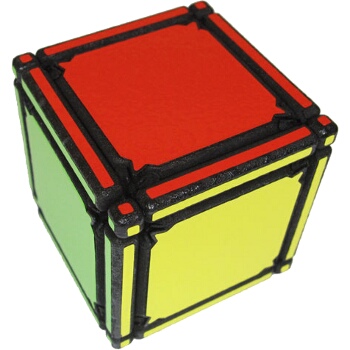|
Mechanical engineering exercise to defy seemingly obvious rules of puzzle making.
Unproportional Cube is a mechanical engineering exercise. Rubik's Cubes of orders up to 6x6x6 are typically proportional, that is, their cubies all have the same size. An example is the V-Cube 6 by Verdes. When the order of the puzzle is further increased, then the corner cubies need to be bigger than the other cubies, because otherwise the corner cubies would fall of, as there is nothing that it connects to the main body of the puzzle. An example of this is the Over The Top 17x17x17 puzzle which has huge corner cubies. Another approach is pillowing the faces in order to make the cubies look similar in size. An example of the is the V-Cube 7, also by Verdes. One notable exception is the Proportional 9x9x9 by Tony Fisher, which turned out to be a very entertaining hoax. Unproportional Cube is a 3x3x3 Rubik's Cube that tries to achieve the same goal as Tony Fisher's hoax, but now with a real functional mechanism. The puzzle has very small corner cubies, which would be too small to hang on mid-turn if a classic mechanism was used. The chose solution was to connect the overhanging cubies with the main body of the puzzle by using dovetail connections, similar to Minimal Twist and Hollow Cube. An overhanging cubie remains stable mid-turn, as it is kept in place by the two adjacent edge pieces. Solving the puzzle is the same as for the classic Rubik's Cube. Edge length: 60 mm Contributors
Thank you to the following people for their assistance in helping collect the information on this page: Oscar Rosen. Collections This puzzle can be found in collections of these members: SGCuber: Sean's Collection Found a mistake or something missing? Edit it yourself or contact the moderator. |
|






